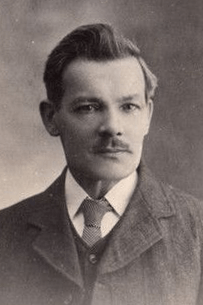Henry Seymour (secularist) facts for kids
Quick facts for kids
Henry Seymour
|
|
|---|---|
 |
|
| Born | 28 January 1860 Hayes, Bromley, England
|
| Died | 28 January 1938 (aged 78) Islington, England
|
| Known for | Publishing The Anarchist and introducing the Edison disc into the United Kingdom |
| Spouse(s) |
Clara Elizabeth Spice
(m. 1880; died 1934) |
| Signature | |
Henry Albert Seymour (born January 28, 1860 – died February 3, 1938) was an interesting English person. He was known for many things during his life. He believed in separating government from religion, which is called being a secularist. He also supported a political idea called individualist anarchism, which focuses on personal freedom.
Seymour was also a pioneer in sound technology. He helped bring gramophones to Britain. He even wrote about sound and invented new parts for these machines. Later in his life, he became interested in the idea that Francis Bacon wrote William Shakespeare's plays.
Contents
Early Life and Activism
Henry Seymour was born in Hayes, Bromley, England, on January 28, 1860. He married Clara Elizabeth Spice on November 2, 1880.
Seymour became well-known around 1882. At that time, he was living in Royal Tunbridge Wells, Kent. He became the secretary of a group called the Tunbridge Wells Secular Society. This group believed that government and public life should not be controlled by religious beliefs.
Publishing The Anarchist
In 1885, Seymour started a newspaper called The Anarchist. This was the first English-language newspaper in Britain to focus on individualist anarchism. This political idea emphasizes individual freedom and voluntary cooperation.
He began working on the newspaper while still in Tunbridge Wells. However, the first issue was published after he moved to Islington, London. The paper was printed from 1885 to 1888. For a short time, it was co-edited by famous thinkers like Peter Kropotkin and Charlotte Wilson. They later started their own newspaper called Freedom.
Besides The Anarchist, Seymour also published many smaller books called pamphlets. He printed flyers for other groups too. One of these groups was the Tunbridge Wells branch of the SDF. Seymour owned a company called the "International Publishing Company."
Role in Anarchism
Henry Seymour played an important role in the history of British anarchism. He was especially important for individualist anarchism. This type of anarchism has become less popular in Britain since the early 1900s.
Seymour published many works about anarchist ideas. He was part of a group of radical thinkers in London in the late 1800s. It is likely that Seymour printed materials for many people and groups during this time. He was also a founding member of a group called Free Currency Propaganda. He wrote a pamphlet for them called The Monomaniacs: A Fable in Finance.
Innovations in Sound Technology
In the early 1900s, Seymour became very involved in the new gramophone industry. Gramophones were machines that played recorded sound.
In 1913, he helped introduce Edison's phonograph to Britain. He wrote about this new technology in a magazine called Sound Wave. In 1917, he wrote a book called The Reproduction of Sound. This book was considered a very important guide in the sound industry at the time.
Seymour also created his own gramophone called the Superphone. He was responsible for many new ideas and improvements in gramophone technology. He was also key in developing EMG Gramophones. He even made parts for their first models.
Later Life and Legacy
In his later years, Seymour joined the Francis Bacon Society. This group believed that Francis Bacon was the true author of William Shakespeare's plays. Seymour became the editor of the society's journal, Baconiana.
His wife, Clara, passed away in 1934. Henry Seymour died in Islington, London, on February 3, 1938. He was 78 years old.
Images for kids


